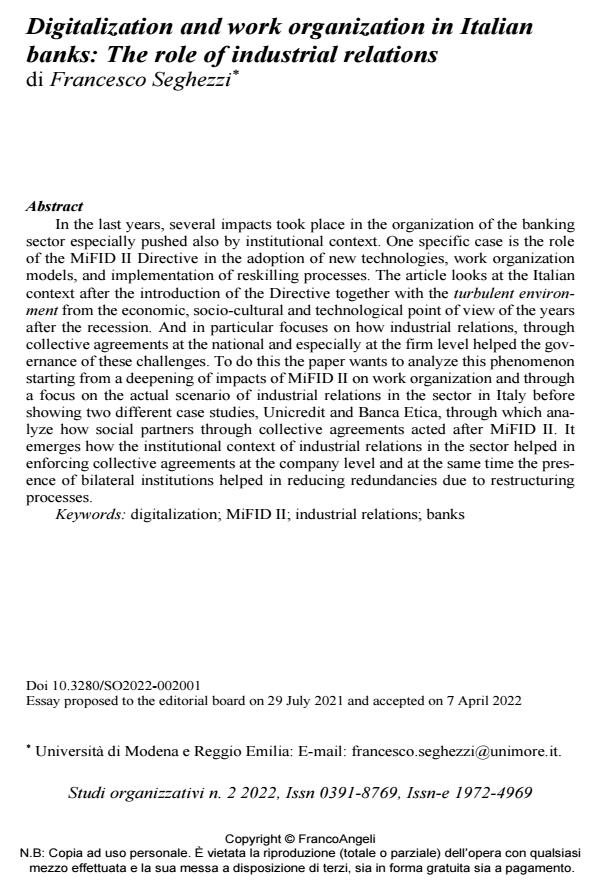Digitalization and work organization in Italian banks: The role of industrial relations
Journal title STUDI ORGANIZZATIVI
Author/s Francesco Seghezzi
Publishing Year 2023 Issue 2022/2
Language English Pages 26 P. 9-34 File size 374 KB
DOI 10.3280/SO2022-002001
DOI is like a bar code for intellectual property: to have more infomation
click here
Below, you can see the article first page
If you want to buy this article in PDF format, you can do it, following the instructions to buy download credits

FrancoAngeli is member of Publishers International Linking Association, Inc (PILA), a not-for-profit association which run the CrossRef service enabling links to and from online scholarly content.
In the last years, several impacts took place in the organization of the banking sector especially pushed also by institutional context. One specific case is the role of the MiFID II Directive in the adoption of new technologies, work organization models, and implementation of reskilling processes. The article looks at the Italian context after the introduction of the Directive together with the turbulent environment from the economic, socio-cultural and technological point of view of the years after the recession. And in particular focuses on how industrial relations, through collective agreements at the national and especially at the firm level helped the governance of these challenges. To do this the paper wants to analyze this phenomenon starting from a deepening of impacts of MiFID II on work or-ganization and through a focus on the actual scenario of industrial relations in the sector in Italy before showing two different case studies, Unicredit and Banca Eti-ca, through which analyze how social partners through collective agreements acted after MiFID II. It emerges how the institutional context of industrial relations in the sector helped in enforcing collective agreements at the company level and at the same time the presence of bilateral institutions helped in reducing redundancies due to restructuring processes.
Keywords: digitalization; MiFID II; industrial relations; banks
Francesco Seghezzi, Digitalization and work organization in Italian banks: The role of industrial relations in "STUDI ORGANIZZATIVI " 2/2022, pp 9-34, DOI: 10.3280/SO2022-002001